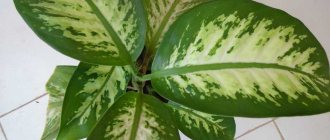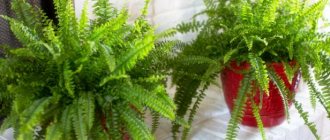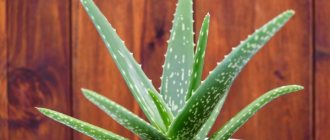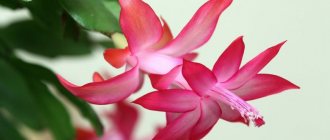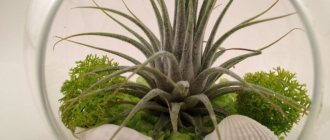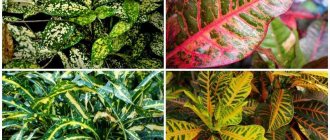Content
- Description
- Growing conditions Relation to moisture
- Temperature
- Chamerops in the garden in winter
- Lighting
- By division
- Watering
dan.kristiansen / Flickr.com
Unpretentious, hardy, quite compact and fluffy palm tree . Suitable for both indoor and garden conditions in the south of the Middle Zone and the Black Sea region.
The topic will be important to palm lovers, gardeners and collectors who own small summer cottages and want to create exotic gardens .
Krzysztof Ziarnek / Personal archive
False palms
Some forms of plants from the Agave, Asparagus and Pandanaceae families have vertical stems with a rosette of long narrow leaves at the top. They are very similar to palm trees and are often mistaken for plants of the Arecaceae family. If it doesn’t matter to you what genus, species or family the indoor palm belongs to, the varieties, names, photos of false palms can also be studied - perhaps your future green pet will be among them.
Choose by appearance, and then look for more detailed information about the characteristics of the plant and the rules for caring for it.
Yucca
Dracaena
Cordilina
Nolina
Pachylodium
If you are looking for a palm-like flower that you can grow in the garden, then the castor bean is more similar to it than other herbaceous annuals. It comes in different shades of foliage and grows to a decent size. Large dissected leaves can reach 80 cm in diameter.
Castor bean
Description
- Chamaerops humilis is a true fan-shaped bushy palm with many trunks, high (in cultivation usually up to 3 m, at home up to 1.5 m).
- Fan leaves consist of 21-29 rays (rarely up to 35), dissected to the petiole, with each ray also cut in half almost to the middle of the length.
- blade is the petiole is the same length .
- in the crown , and on each trunk , of which there can be more than 10. All this makes the crown of Hamerops very fluffy.
Forest and Kim Starr / Personal archive
New trunks are formed from dormant buds at the bottom of the main trunk and on the roots, bending and touching the ground, they form their own roots. Thus, the bush can grow over tens of square meters, filling the space with itself, but this growth occurs very slowly , over decades.
By the way, in design , heaped, compact, multi-trunked chamerops bushes look much better than single or scattered trunks of this palm tree.
- The trunks are covered in a coat of reddish hairs (like trachycarpus).
- The leaves are hard, the leaf rays are straight, whitish on the underside.
- There is a variety of chamerops with silver-blue leaves (var. argentea), adapted to a drier and hotter climate
MPF / Personal archive
- When they die, the leaves dry out and, hanging, stay on the palm tree for another couple of years.
- The leaf petioles are equipped with hooked spines .
- The flowers are small, yellow-orange, unisexual or bisexual, forming cluster-shaped inflorescences. blooms in May-June.
- The fruits are oval drupes of orange-burgundy color. The seed is 5-7 mm, densely covered with hairs.
carmona rodriguez.cc / Flickr.com
Bathyporeia / Flickr.com
Beneficial properties of the Hamerops palm tree
Chamerops has the ability to clean the air of dust, while saturating it with oxygen. With regular, abundant watering, the plant creates a favorable level of humidity around itself. According to signs, the palm tree attracts significant flows of energy, which can help achieve career advancement.
Growing conditions
It is the only species of its genus and the only palm with a native range in mainland Europe, making Chamaerops one of the hardiest palm species in the world. In terms of its endurance, Hamerops is one of the top ten among palm trees.
Katja Schulz / Flickr.com
Relation to moisture
- It grows in the arid mountainous regions of Spain, North Africa and the western islands of the Mediterranean Sea.
- This is a very drought-resistant species that can tolerate drying out of the earthen clod for a week, retaining the necessary moisture in the trunk.
- Hamerops easily tolerates dry air in apartments and midday direct sun in the garden. Although better humid air .
Diotime/Flickr.com
Temperature
- The optimal summer temperature is +23-28 °C, but the plant successfully tolerates cold snaps and heat up to +40 °C.
- Optimal winter mode - +1-15 °C; Such conditions are necessary for wintering a palm tree indoors. Having accumulated strength during the rest period, in the summer the chamerops will be able to produce 2-3 leaves per month.
Chamerops in the garden in winter
- In winter, the palm tree can withstand for a short time and, even if it freezes to the ground, it always recovers from roots and dormant buds.
dan.kristiansen / Flickr.com
- It is important to prevent the soil from freezing and becoming excessively dry in winter.
- When drops to -8 °C, it is necessary to turn on the garland and heat the palm tree all night and morning.
- If the frost of -5-7 °C has lasted for 2-3 days, you also need to turn on the garland for 10-15 hours.
Lighting
- Adult chamaerops develop better in good bright light , and young animals develop better in partial shade , with direct sunlight.
- At home, a palm tree is placed near south window.
- is turned every 2 weeks from mid-May to mid-September.
Maja Dumat / Flickr.com
Where to put
— Lighting for adult Fortune trachycarpus should be bright, as they prefer bright sunlight, while young specimens need diffused light.
— The temperature should be normal room temperature all year round. In the summer, you can take this palm tree outside if conditions permit. But we bring it back indoors before the onset of autumn frosts. In winter, the temperature should not be lower than 10-13 degrees.
— Air humidity can be maintained by regular spraying, periodically wiping the leaves with a damp cloth, and using air humidifiers.
You can read more about proper care of palm trees here.
How to grow
is grown from seeds and by dividing the bush.
By division
- Cut off the medium-sized lateral root shoots with a knife and sprinkle the cuts with charcoal (on the mother plant too).
- take a long time to take root, 3-6 months, in the same soil as for sowing seeds.
Sowing seeds
Omar hoftun / Personal archive
- Seeds without cold stratification are soaked in warm water (+35-45 °C) for 2-3 hours, changing the water to warmer water every 30 minutes. Do not soak the seeds for several days!
- Sow the seeds in March in separate pots to a depth of 1 cm in a mixture of peat, sand and baking powder (perlite, vermiculite, etc.) in proportions 1:1:1.
- Drainage is needed at the bottom of the container (expanded clay, coal, pebbles).
- Shoots appear at a temperature of +25-30 °C within 1-2 months.
Tim Martin / Personal archive
pots for sowing, since Hamerops does not like transplants . It will grow in such a container for about 5 years, after which the palm tree, after preliminary hardening, can be transplanted into the garden.
Often this palm tree is grown as a permanent tub crop , taking it outside from April-May to September-November.
Alwyn Ladell / Flickr.com
Flower design
Young plants can stand on the windowsill, and adults can stand in the corner of a spacious and bright room or greenhouse. If you have a collection of palm trees and a large greenhouse, then put the palms together and you will get a luxurious composition in a spectacular and elegant style. Small specimens of Trachycarpus Fortune are taken outside in the summer. Place the plants in a place where the leaves will not be damaged by people or strong winds. The Trachycarpus Fortune palm tree looks especially impressive in large rooms, especially at the doors to the balcony or terrace. And it is worth paying attention to the variety Trachycarpus Wagner. Trachycarpus Fortune and Trachycarpus Wagner are similar in care. Good luck to you.
Landing Features
- Sometimes they write that sawdust . This cannot , since sawdust and shavings are very moisture-intensive, retain water for a long time and rot, infecting the palm tree.
- Also, when transplanting into open ground (April-June), you should not add excess manure , since it is an alkaline medium and can excessively increase the soil pH, which should be 6-7.
- Drainage must be poured into the planting hole , and 1 part of local garden soil is added
- When planting, it is important not to bury the seedling, but even to slightly raise the root collar above the general ground level (by 1-2 cm).
Forest and Kim Starr / Flickr.com
Washingtonia is a record holder with huge fans
One of the largest and fastest growing palm trees that have been introduced into indoor culture, Washingtonia captivates with its inimitable size. But it wasn’t her size that made her popular. Unusual “details” - fibers, thorns, threads - make Washingtonia stand out from any other palm tree, along with the ideal structure of massive fan-shaped leaves, striking in their symmetry. This plant can fit on a windowsill only at a very young age: due to its growth rate, Washingtonia becomes cramped in a small space in a matter of months.
The name of the palm tree, received in honor of George Washington, eloquently indicates its distribution area - North America, or more precisely, the southwest of the North American continent.
that Washingtonia is called the most massive indoor palm tree, although many other giants can compete with it in terms of size. What makes the plant massive and large is not even the maximum possible height of 3 m, but the size of the leaf fans. Washingtonias have a fairly low trunk, which even at a considerable age practically does not rise and seems modest compared to the height of the crown. It is rough and straight, with noticeable horizontally jagged marks of leaves that hang at the top for a long time and practically do not fall off without removal.
This is a classic fan palm, with huge rounded fans up to 2 m long looking overwhelmingly massive. Dissected only up to a third of their length into lanceolate segments, the size of which increases towards the center of the fan, they appear to be flawless in form. The visual roughness of Washingtonia leaves has a negative impact on the surrounding space, overwhelms free space and can become a source of problems in small rooms with low ceilings.
But in spacious rooms, a better zoning accent and a giant with the same separating effect simply cannot be found. But the main feature of Washingtonia does not concern the size of the leaves. This plant has thorns on bare and rather short petioles, and along the edge of the fans there are fibers that stick out bizarrely, more like threads, giving this fan-shaped beauty a wild and slightly aggressive, but very unusual look. At the same time, the “disheveledness” of Washington does not give the impression of neglect or sloppiness.
Washingtonias on sale today are represented mainly by species plants. Washingtonia robusta - a beauty with a mirror-like, shiny surface of rich green leaves, devoid of fibers and thread-like formations - is inferior in popularity to the most popular Washingtonia filifera with its grayish fans decorated with long, hanging fibers along the edges. But both beauties deserve special mention as the most decorative large palm trees.
Washingtonia robusta in pots
Basic care
Watering
- Water the palm tree at home once a week; in winter, once a month is enough if kept cool.
- In open ground, you don’t need to water at all, only during a prolonged period of drought - once a week.
- Brown spots on the leaves are a signal of waterlogging of the soil, which Hamerops categorically cannot tolerate.
Spraying
- Spray the chamerops as rarely as possible so as not to over-moisten the growing point, otherwise the palm tree will rot.
- In the garden, during drought and hot weather, you can sprinkle the crown with warm water approximately once a week.
- In room conditions, dust from the leaves is wiped with a damp, clean sponge. To prevent infections, hydrogen peroxide (1:10) can be added to the sponge water.
Scott Zona / Flickr.com
Feeding
- The palm tree in the garden , including when grown in containers, is fed with complex granular fertilizers 2-3 times per season.
- In indoor conditions, they are fed, like most ornamental foliage plants, perhaps in a lower concentration, from spring until the end of summer, once every 2-3 weeks.
Preparing for winter
In October, the leaves of the garden chamerops are collected in a bunch, protecting the growing point from rain.
Young specimens
- In November, a foam box is installed . First, the entire palm is wrapped with agrofibre in 3-4 layers.
- is attached to the plant , and the space in the box and the outside circle around the trunk are covered with mulch (straw, cereal husks).
Mature plants
- Mature palm trees are wrapped with burlap, then with a garland, and on top with agrofibre. And is heavily mulched . Then, even if the main trunk freezes to the ground, the chamerops will grow from dormant buds.
Dr. Nasser Halaweh / Flickr.com
Tips for fans
It is always worth remembering that the palm tree is an exotic host of the tropics, so only a few out of a hundred survive in living conditions. But if you give your indoor palm tree constant care, it will take root well.
Growing from seeds requires a lot of patience and time, so it would be better to buy a ready-made flowerpot in a special store. And thereby creates maximum conditions for rapid growth - constant heat, partial shade and sufficient humidity.
To get good humidity in the room, you need to place a basin of water near the palm tree. You should also organize a so-called “shower” for the plant more often, spraying the leaves with water from a spray bottle.
Sometimes it is necessary to clean the leaves with a mild soapy solution to prevent small pests from appearing. If you try to prune, shorten or shape, the plant may die as there is a possibility of damaging the flower's growing point.
Before purchasing, you should think in advance about all the living conditions that can be provided to you in a given residential area. It is better to choose a plant based on the established climatic conditions of the room.
Possible difficulties
- In winter, in a dry, warm room, chamerops can be attacked by spider mites .
- In the garden, when the plant’s immunity decreases due to high soil moisture and cold weather, the palm tree can be attacked by scale insects, mealybugs , and fungal diseases.
- Pests are eliminated insecticides (Aktellik, etc.).
- In case of fungal diseases, it is better to replant chamerops in new soil, in a drier place, with a thicker layer of drainage, closer to the southern wall of the house, treating it with fungicides. For the palm tree is a very beautiful, exotic and valuable plant to lose.
So, if you are creating a subtropical landscape in a temperate climate in your garden, selecting the hardiest types of palm trees, and want to create a luxurious landscape design with a resort microclimate, plant Hamerops squat . Combined with a small pond, it will remind you of warm Mediterranean beaches.
Discuss the video
Diseases and pests
The tree can be affected by the following diseases:
| Name | Description of the lesion |
| Root mealybug | The plant stops developing. The leaves turn yellow and wither. |
| Spider mite | The leaves curl into tubes and wither. White plaques and thin cobwebs appear on the greenery. |
| Whitefly | Insects can be seen on greenery with the naked eye. |
| Shchitovka | Pests live at the bottom of the leaf. When affected, the surface of the plate becomes covered with yellow spots. |
To cope with diseases, affected leaves and roots need to be cut off with a knife. In the store you can purchase pest control products (Karbofos, Aktara and other insecticides).

